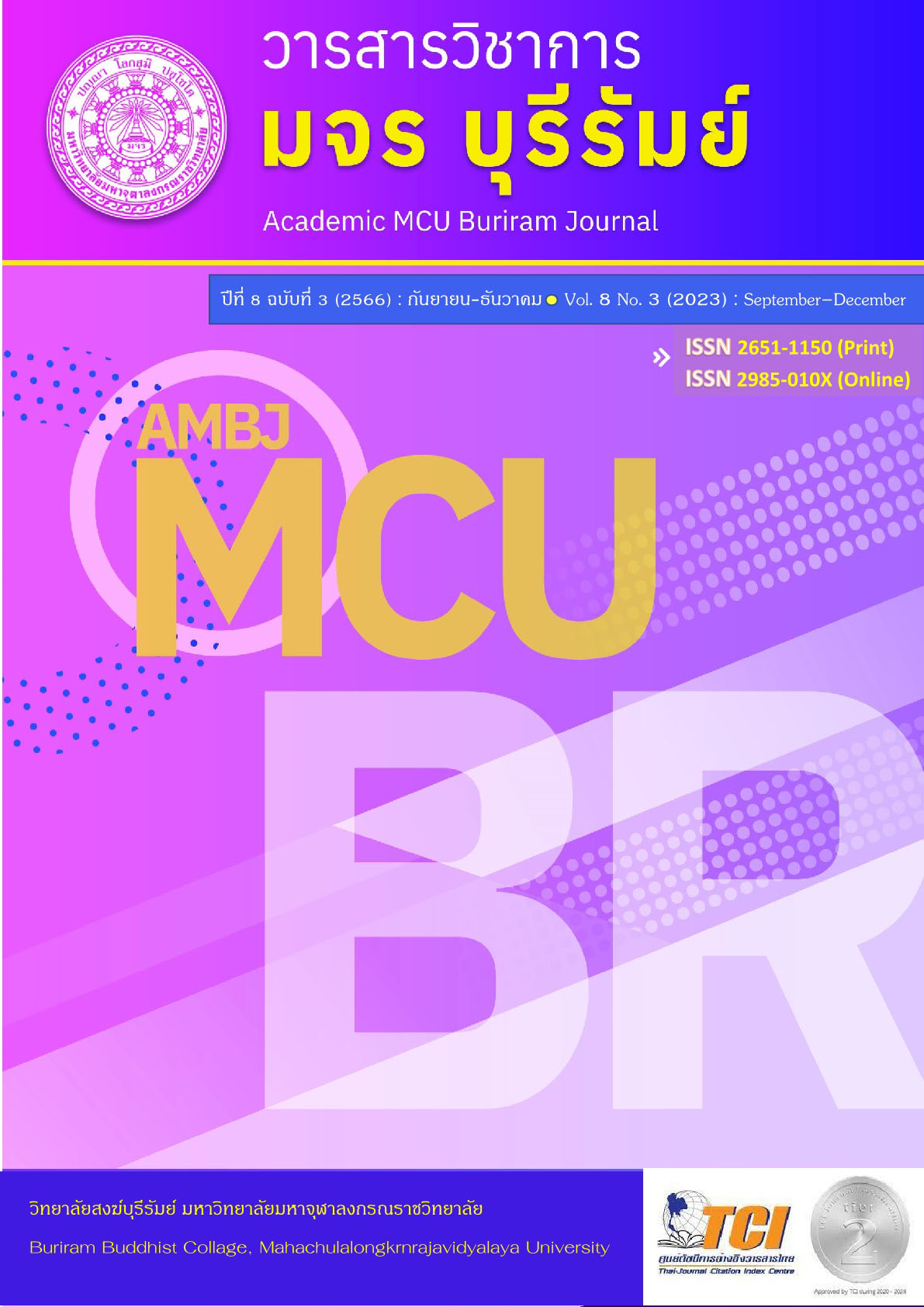Teachings of Unahissavijaya in the Khmer-language-Palm Leaf Scripture: Values for the Literature and Exorcision and Life Extenion of South Isaan Community
Keywords:
Teachings of Unahissavijaya, The Khmer-language-Palm Leaf Scripture, Values for the Literature, Exorcision and Life Extenion, South Isaan CommunityAbstract
The purpose of this article is to present the values that appeared in the teachings of Unhissavijaya, the Khmer-language manuscript, on the literature and the rituals to perfoem the exorcise rituals and life extenion of the South Isaan community. The historical background of this manuscript has not been identified the author's name, date, month, and year of composing. It is now kept at Chai Mongkhon Muniwat Temple, Thom Phrai Sub-district, Sikhoraphum District, Surin Province. The composing type is a prose style of Buddhist literature combined with doctrine literature. Composing technique is simple and uncomplicated. Language Idioms are in the forms of rhetorical description, expressions, metaphors, allegory, and sermons.
Synopsis told the story of the Buddha going to preach the Abhidhamma 7 scriptures in the Tavatimsa Heaven. There was a Deva named "Supatithithepputra" knew that in 7 days he would be from heaven and be reborn in hell and after hell would become a beast and then would be born as a blind and deaf human being. Therefore, he had depressed mind and went to ask Phra Indra to help but could not help him. Then Phra Indra brought Supatitithepphabutra to meet the Buddha and told the Buddha the whole story. The Buddha spoke about the previous deeds of Supatitithepphabutra and teach the Dhamma on "Unahissavijayagatha" and said that if the Devas wished to have a long life, they had to chant this Gatha. And in this scripture, there is a record about the life extenion ritual.
The author's concept and aim is to refrain from practicing the unwholesome deeds and to follow the wholesome deeds. The aim is to be a tool for propagating Buddhism and performing rituals according to the Buddhist beliefs. The values of the teachings of Unahissavijayagatha are literary, content, social, and applicable in the exorcision and life extenion ceremonies of South Isaan Community. The teachings can be applied to lifestyle for peaceful coexistence of which the Buddhist monks have used to preach in various merit-making ceremonies.
References
คณาจารย์มหาวิทยาลัยมหาจุฬาลงกรณราชวิทยาลัย. (2565). วรรณกรรมพระพุทธศาสนา.กรุงเทพฯ: สำนักพิมพ์มหาวิทยาลัยมหาจุฬาลงกรณราชวิทยาลัย.
โครงการหอคัมภีร์และวรรณกรรมโบราณอีสาน. (2566). พระธรรมเทสนา เรื่อง อุณหิสสวิชัย (ฉบับแปลจากอักษรขอมภาษาขะแมร์). หลักสูตรพุทธศาสตรมหาบัณฑิตและพุทธศาสตรดุษฎีบัณฑิต สาขาวิชาพระพุทธศาสนา. บัณฑิตศึกษา วิทยาลัยสงฆ์สุรินทร์: มหาวิทยาลัยมหาจุฬาลงกรณราชวิทยาลัย วิทยาเขตสุรินทร์.
นงเยาว์ ชาญณรงค์, (2553). วัฒนธรรมศาสนา. พิมพ์ครั้งที่ 7. กรุงเทพฯ: มหาวิทยาลัยรามคำแหง.
พระพรหมคุณาภรณ์ (ป.อ.ปยุตฺโต). (2558). พจนานุกรมพุทธศาสตร์ ฉบับประมวลธรรม. พิมพ์ครั้งที่ 31. กรุงเทพฯ: สำนักพิมพ์ผลิธัมม์.
พระราชวัชรรังสี (เอี่ยม สิริวณฺโณ). (2562). มนต์พิธี สำหรับพระภิกษุสามเณรและพระพุทธศาสนาในอีสานใต้. ประกอบรายวิชา: พระพุทธศาสนากับวรรณกรรมท้องถิ่น ณ วิทยาลัยสงฆ์บุรีรัมย์ มหาวิทยาลัยมหาจุฬาลงกรณราช.
พระราชปริยัติวิมล (ศรีสุระ) และวิเชียร แสนมี. (2561). คาถาอุณหิสสวิชัยศักดิ์สิทธิ์:ต่ออายุป้องกันภัย. วารสารพุทธปรัชญาวิวัฒน์, 2(1), 34.
ภูมิจิต เรืองเดช. (2566). เอกสารประกอบการบรรยาย เรื่อง วรรณกรรมทางพระพุทธศาสนาในอีสานใต้. ประกอบรายวิชาพระพุทธศาสนากับวรรณกรรมท้องถิ่น: ณ วิทยาลัยสงฆ์บุรีรัมย์ มหาวิทยาลัยมหาจุฬาลงกรณราช.
วัดชัยมงคลมุนีวาส, (ม.ป.ป.). พระธรรมเทสนา เรื่อง อุณหิสสวิชัย. คัมภีร์ใบลานอักษรขอมภาษาขแมร์. หมู่ 1 ตำบลตรมไพร อำเภอศีขรภูมิ จังหวัดสุรินทร์. สำรวจ ณ วันที่ 1 กันยายน 2565.
Downloads
Published
How to Cite
Issue
Section
License
Copyright (c) 2023 Academic MCU Buriram Journal

This work is licensed under a Creative Commons Attribution-NonCommercial-NoDerivatives 4.0 International License.
ทัศนะและความคิดเห็นที่ปรากฏในบทความวารสารฉบับนี้ถือเป็นความรับผิดชอบของผู้เขียนบทความนั้น ไม่ถือเป็นทัศนะและความรับผิดชอบของบรรณาธิการ





